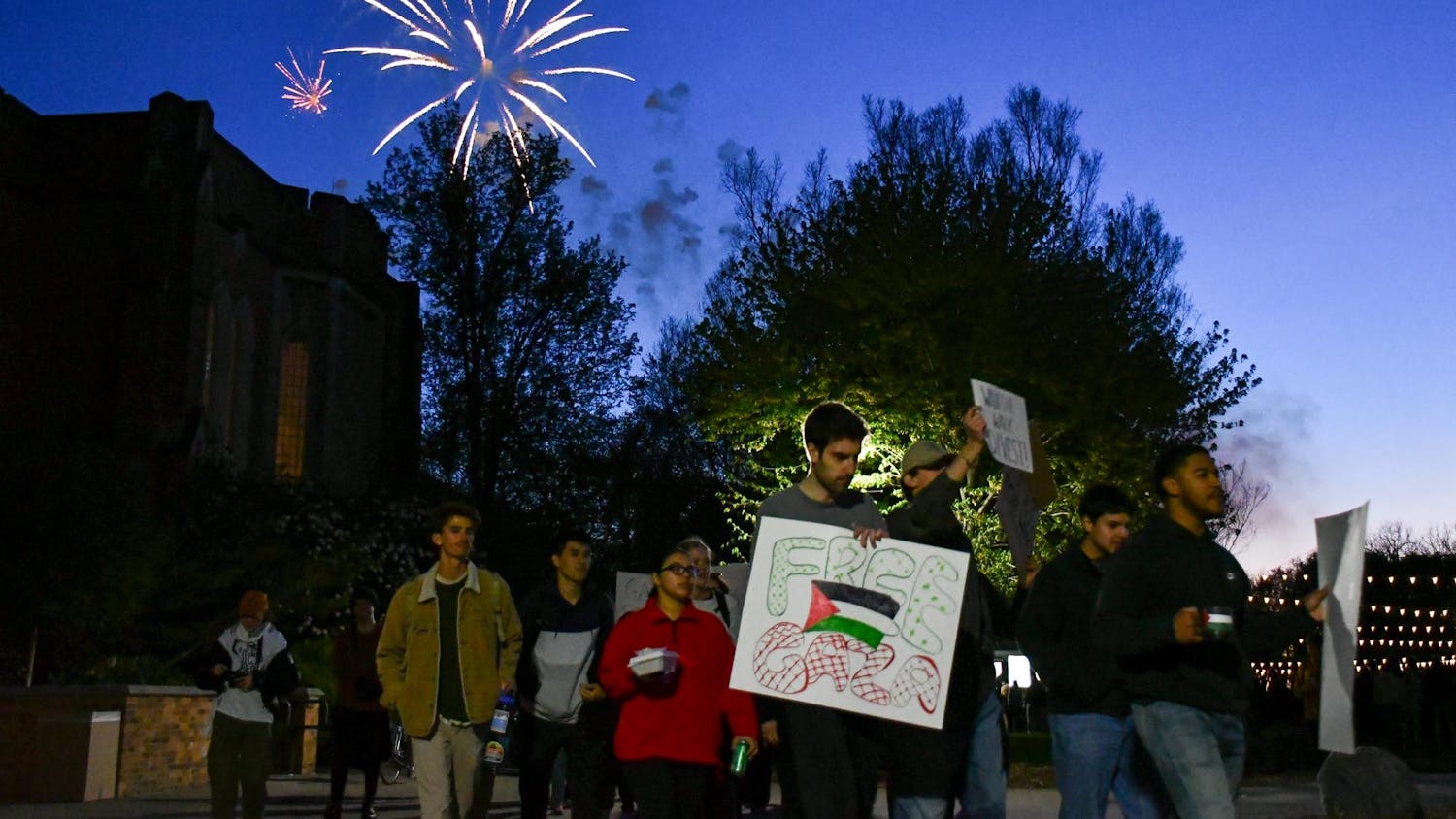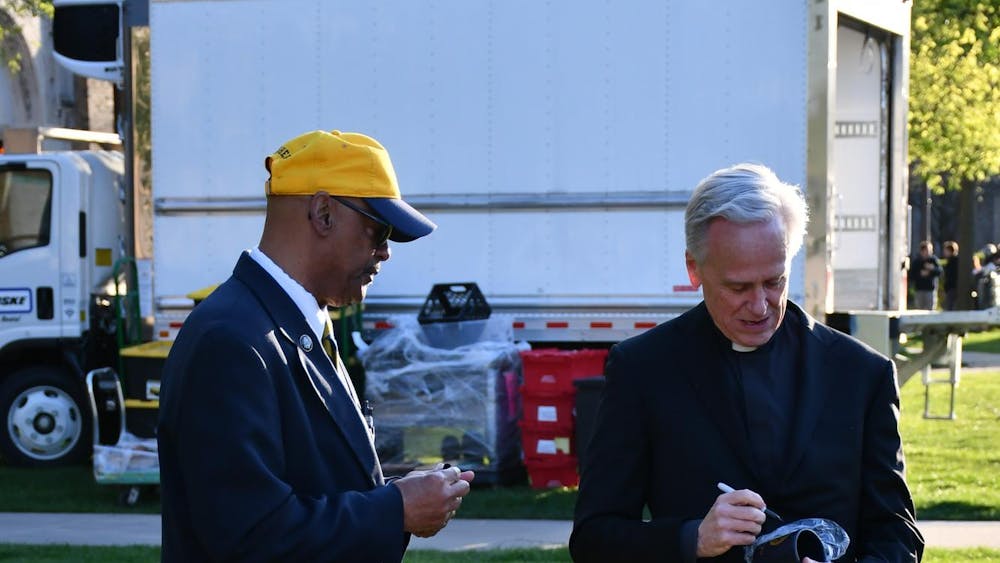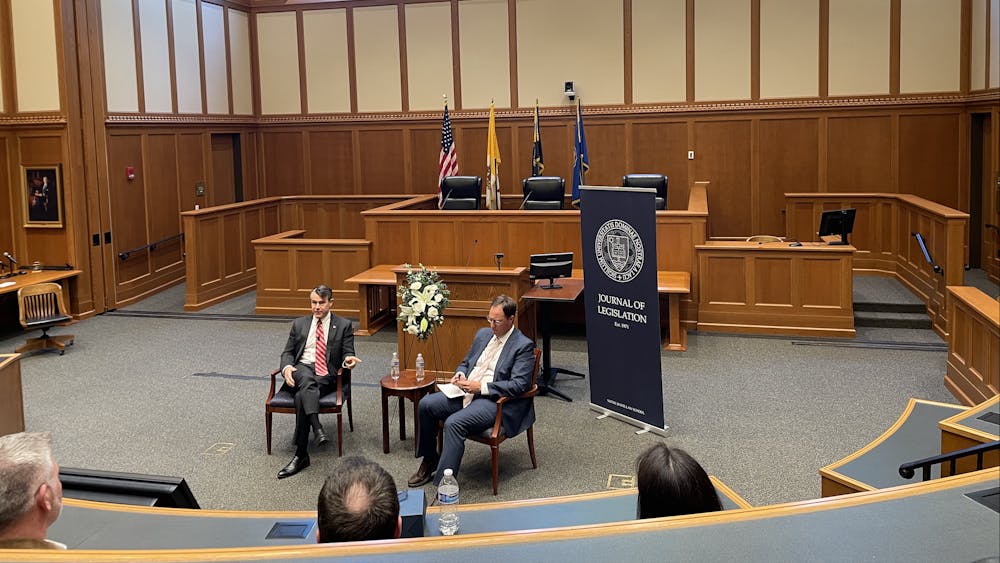Assistant director for life sciences research and outreach Fr. Terrence Ehrman gave a lecture on the significance of water Tuesday night in Geddes Hall. The lecture was part three of a six-part series hosted by The Center for Theology, Science and Human Flourishing entitled “A Broader Vision of Reality: Integral Ecology within the Great Lakes Watershed,” which focuses on the intersection between the environment and religion.
The lecture covered a variety of topics, including what and where water is, Great Lakes water use, a broader vision of ecology in relation to water and the theology of creation focusing on water. Ehrman said the discussion is important because water is vital to life on Earth.
“As far as we know, water is essential for life,” he said. “Any planet in our solar system that we know of that has life — its requirement is water. So it’s essential for life. Water gives life.”
Despite water's importance, Ehrman said this resource is not readily accessible for a large portion of the world’s population.
“There are a lot of people across the world who don’t have access to water,” he said. “There are a billion people on this planet right now who lack access to clean water, to safe water. That’s 18 percent of the population — 3.5 million people die each year from water related disease. Waterborne disease claims more lives each year than wars, and half of the world’s hospital beds are filled with people suffering from water-related illness.”
Ehrman said because water is an “inalienable right,” it should be considered a “public good” and properly handled by the public.
“In Catholic social understanding, access to water is an inalienable right,” he said. “As a vital element essential to survival, everyone has a right to it. But by its very nature, water cannot be treated as just another commodity among many, and it must be used rationally and in solidarity with others.”
In spite of water’s value, Ehrman said, it is easy for the Midwest region to take water for granted given the Great Lakes’ vast supply of fresh water.
“Of all of the water on the planet, 2.5 [percent] is fresh,” he said. “Of all that fresh [water], only 1.5 [percent] is surface water. It’s estimated that the Great Lakes are 20 percent of all the world’s fresh water … and it’s used for all sorts of different purposes and uses.”
Ehrman said there are still steps that need to be taken to ensure the Great Lakes Watershed continues to be a viable resource.
“I talked about areas of concern, which are identified areas within the Watershed where there has been an impairment or reduction of the chemical, physical or biological integrity of the Great Lakes Watershed and water,” he said. “ … In 2010, the Great Lakes restoration initiative was begun to accelerate efforts to protect and restore some of these areas of concern.”
Water particularly connects to Scripture through its prominent featuring in creation and redemption stories, Ehrman said.
“A month ago, in my first lecture, I talked about this relationship between creation and redemption,” he said. “These are two elements that need to go together. They’re two elements of God’s single divine economy of salvation. With so much of Scripture, there are images of humankind’s redemption being imaged as a new creation. So creation and redemption can’t be separated.”
Ehrman said these elements are applied to the use of water in the Christian sacrament of baptism, in particular.
“A Christian understanding of this image of restoration from Ezekiel finds its fullest realization and manifestation in Jesus Christ,” he said. “So when Jesus has died on the cross and his side is pierced with the lance, blood and water flow out. Jesus is the temple, he identifies himself as the temple and this water coming from the pierced side of Christ is this life-giving water. The water and the blood are images of baptism and Eucharist … baptism gives life [and] one is reborn of water in the spirit.”













